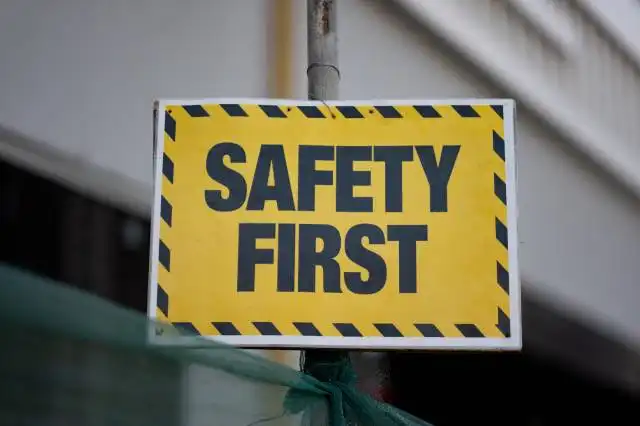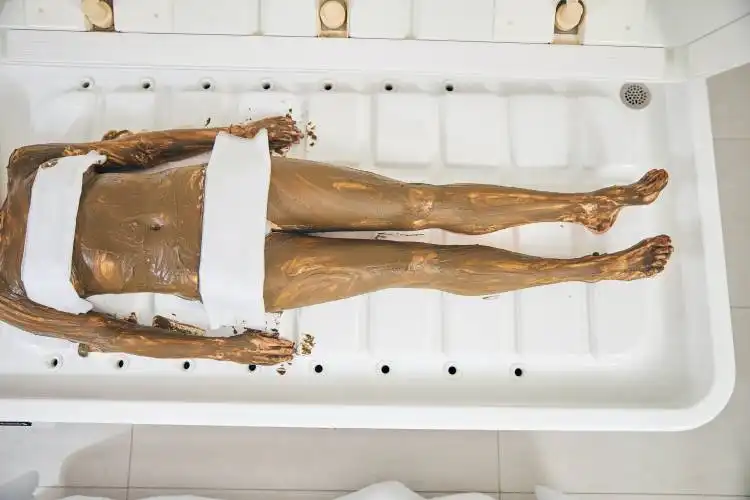Start a Day Spa
Diving Into the Serene World of Day Spa Business
| Updated


DAY SPA
So, you're looking to dive into the invigorating world of day spas? Outstanding choice! This business caters to people looking to unwind and destress from the world, offering a range of services from rejuvenating body massages to glorious skin treatments. As the owner of a day spa, you'll be selling not just a service, but a luxurious experience that helps others rebalance - basically, you'll be dealing in serenity. Sounds divine, doesn't it?
Jump to Business Plan
RELATED BUSINESS IDEAS
Browse ALL Health & Beauty Innovations Business Ideas
Discover Your Perfect Domain
Unlock the door to your online success with our hand-picked selection of premium domain names. Whether you're starting a new venture or rebranding an existing one, the right domain can set the tone for your digital presence. Browse through our curated list, each with its unique potential to enhance your brand's visibility and credibility.
DAY SPA MINI BUSINESS PLAN
This a quick reality check to help you identify the strengths and weaknesses of your business concept before you dive in.
Expected Percent Margin:
- Gross Margin: 70-80%
- Net Profit Margin: 15-25%
Earnings Expectations:
- Daily Earnings: $400 - $1,000
- Weekly Earnings: $2,800 - $7,000
- Monthly Earnings: $12,000 - $30,000
- Annual Earnings: $144,000 - $360,000
Actions to Achieve Those Numbers:
Service Quality and Diversity
- Investment in Equipment : High quality spa equipment with a wide range of services will allow you to cater to a larger client base. Initial investment for this can range from $20,000 - $50,000.
- Continual Training : Regular staff training to keep up with the latest treatments and techniques will ensure a high-quality service.
Client Acquisition
- Effective Marketing : Consistent marketing efforts such as a functional website, targeted online ads, and social media marketing will help reach a wider audience. Spend about 5% - 10% of your gross revenue on marketing activities.
- Customer Retention : Building a loyal consumer base with strategies such as reward programs and exclusive events contribute substantially to revenues.
Operations
- Lean Management : Keep overhead low by optimizing operations. Aim to keep rent at not more than 8%-10% of your monthly sales.
- Balancing Supply and Demand : Appropriate staff scheduling in response to demand trends will reduce labor cost inefficiencies.
Sales Targets
- Population Market Share : A neighbourhood day spa may cater to approximately 2% - 5% of the local population. Adjust your prices and customer targets accordingly.
- Average Spending Per Visit : Aim for an average spending of $70 - $100 per visit.
Remember, individual results can vary based on location, competition, and specific operational strategies. Consult with a financial advisor or a business consultant for tailored advice.
NOT WHAT YOU HAD IN MIND? Here are more ideas



Browse ALL Health & Beauty Innovations Business Ideas
Grab Your Business Website Name
Before you get caught up in the whirlwind of setting up your business, invest in a domain name. It's a small but significant step that lays the foundation for your brand and makes it easier for customers to find and trust you. Just like you wouldn't build a house without securing the land first, don't build a business without securing your domain name.
"Why? Can't that wait?" Here's why it shouldn't
Step 1: Determining if the Business is Right for You
Breakdown of Startup Expenses
Before starting a day spa, it is important to understand the startup expenses associated with the business. These expenses can include the cost of renting a space, purchasing equipment, and hiring staff. It is important to research the local market to determine the cost of rent, the cost of equipment, and the cost of labor. Additionally, it is important to consider the cost of marketing and advertising, as well as any other costs associated with the business.
Breakdown of Ongoing Expenses
In addition to the startup expenses, it is important to consider the ongoing expenses associated with running a day spa. These expenses can include the cost of supplies, such as towels, linens, and other products. Additionally, it is important to consider the cost of utilities, such as electricity, water, and gas. It is also important to consider the cost of insurance and other business-related expenses.
Examples of Ways to Make Money
Once the startup and ongoing expenses have been determined, it is important to consider ways to make money. This can include offering services such as massages, facials, and body treatments. Additionally, it is important to consider offering packages, such as spa packages and membership packages. It is also important to consider offering retail products, such as skincare and beauty products. Additionally, it is important to consider offering gift cards and promotional discounts to attract new customers.
Step 2: Naming the Business
When it comes to naming the business, it is important to come up with something that is memorable and easy to spell. It should also be something that reflects the services that the day spa will offer. It is important to make sure that the name is not already taken and that it is available to be trademarked. Additionally, it is important to make sure that the domain name is available and that the social media handles are available. It is also important to make sure that the name is not too long or too complicated. It should be something that is easy to remember and easy to pronounce. Additionally, it is important to make sure that the name is not too similar to another business in the area. This will help to avoid confusion and potential legal issues.
Step 3: Creating a Business Plan
Outlining Goals
When creating a business plan, it is important to outline the goals of the day spa. This should include a timeline for when the business should be up and running, and a list of what services the spa will offer. Additionally, it is important to determine the size of the spa and the number of employees that will be needed. This will help to determine the budget for the business.
Establishing a Budget
The budget for a day spa should include both the startup costs and the ongoing costs. Startup costs include the cost of renting or buying a space, purchasing furniture and equipment, and hiring staff. Ongoing costs include the cost of supplies, utilities, and payroll. Additionally, it is important to set aside money for marketing and advertising to help bring in customers.
Identifying Target Market
When creating a business plan, it is important to identify the target market for the day spa. This should include the demographic of customers that the spa is looking to attract, such as age, gender, and income level. Additionally, it is important to determine the location of the spa and the type of services that will be offered. This will help to determine the pricing structure and the type of marketing that should be used to reach the target market.
Step 4: Securing Financing
Types of Financing
When starting a day spa, there are a variety of financing options available. These include traditional loans, venture capital, and angel investors. Traditional loans are the most common form of financing and can be obtained from banks or other financial institutions. Venture capital is another option, which involves investors providing capital in exchange for a share of the business. Angel investors are individuals who provide capital in exchange for a share of the business and may also provide advice and mentorship.
Sources of Financing
When looking for financing, there are many sources to consider. Banks are a great place to start, as they can provide traditional loans with competitive interest rates. Other sources include credit unions, online lenders, and private investors. Additionally, there are government programs that provide grants and loans to small businesses. It is important to research all available options to find the best financing solution for your business.
Step 5: Finding a Location
Factors to Consider
When looking for a location for your day spa, there are several factors to consider. First, you need to think about the size of the space you need. You will need enough room for the spa services you plan to offer, as well as a reception area, changing rooms, and storage. You should also consider the location of the space. Is it easily accessible to your target customers? Is there enough parking? Is it in a safe area? Finally, you should consider the cost of the space. You will need to factor in the cost of rent, utilities, and any renovations you may need to make.
Leasing vs. Buying: When it comes to finding a location for your day spa, you have two options: leasing or buying. Leasing is often the more cost-effective option, as you don’t need to put down a large amount of money upfront. However, if you plan to stay in the same location for a long time, buying may be a better option. You will need to consider the cost of the property, as well as any renovations you may need to make. You should also factor in the cost of property taxes and insurance.
Step 6: Hiring Employees
Types of Employees Needed
When starting a day spa, it is important to consider what types of employees you need. Depending on the size of the spa, you may need to hire massage therapists, estheticians, receptionists, and other support staff. You may also need to hire administrative staff to manage the day-to-day operations of the spa.
Finding Qualified Employees
Once you have determined the types of employees you need, you will need to find qualified individuals to fill those positions. You can start by posting job listings on job boards and social media. You can also reach out to local schools and colleges to find qualified candidates. Additionally, you may want to consider using a staffing agency to help you find qualified employees. Once you have identified potential candidates, you should conduct interviews and background checks to ensure that they are the right fit for your spa.
Step 7: Purchasing Equipment and Supplies
Types of Equipment Needed
When starting a day spa, there are many pieces of equipment that are necessary for the business to run smoothly. This includes massage tables, facial beds, pedicure chairs, towels, sheets, and other supplies. It is important to research the different types of equipment available and determine which ones are best for the spa.
Sources for Purchasing Equipment
Once the types of equipment needed have been determined, it is important to find the best sources for purchasing them. This may include looking online for deals or visiting local suppliers. It is also important to consider the quality of the equipment, as well as the cost. Additionally, it is important to research any warranties or return policies that may be offered. This will help ensure that the equipment purchased is of the highest quality and will last for many years.
Step 8: Promoting the Business
Advertising Strategies
Advertising is an important part of any business, and a day spa is no exception. To get the word out about your business, consider traditional advertising methods, such as print ads, radio ads, and television ads. Additionally, you may want to consider online advertising, such as Google Ads, Facebook Ads, and Instagram Ads. You can also look into local newspapers, magazines, and other publications to get your message out.
Social Media Strategies
Social media is a great way to reach potential customers and build relationships with them. Consider creating a Facebook page, Twitter account, and Instagram account for your day spa. Use these accounts to post updates about your business, such as special promotions, discounts, and new services. Additionally, you can use these accounts to engage with customers, answer questions, and build relationships. Finally, you can use social media to run targeted ads to reach potential customers in your area.
Step 9: Staying Compliant
Licensing Requirements
Before opening a day spa, it is important to research and understand the licensing requirements in the area. Depending on the location, the business may need to obtain a business license, health department permit, and other permits. It is important to understand the requirements and make sure the business is compliant.
Tax Requirements
Additionally, it is important to understand the tax requirements for a day spa. This includes filing taxes for the business, as well as collecting and filing taxes on services provided. It is important to understand the tax requirements and make sure the business is compliant.
It is also important to research the regulations for the area, such as zoning regulations. Additionally, it is important to understand the regulations for hiring employees, such as minimum wage, overtime, and other regulations. It is important to understand the regulations and make sure the business is compliant.
Finally, it is important to understand the regulations for advertising and marketing. This includes regulations for advertising on television, radio, and other media. Additionally, it is important to understand the regulations for online advertising, such as social media and email marketing. It is important to understand the regulations and make sure the business is compliant.
EXPLORE MORE CATEGORIES
Browse ALL Business Idea Categories
TAKE THE NEXT STEPS










